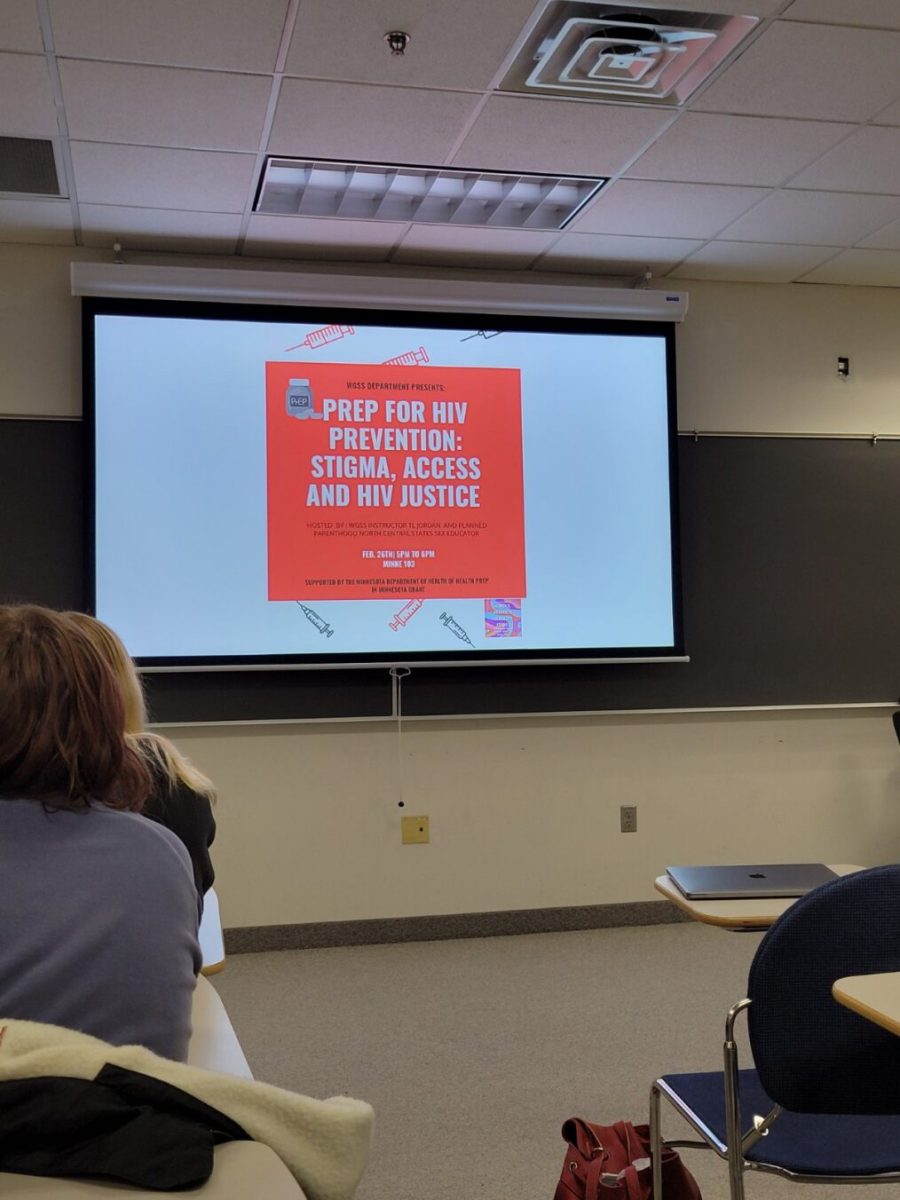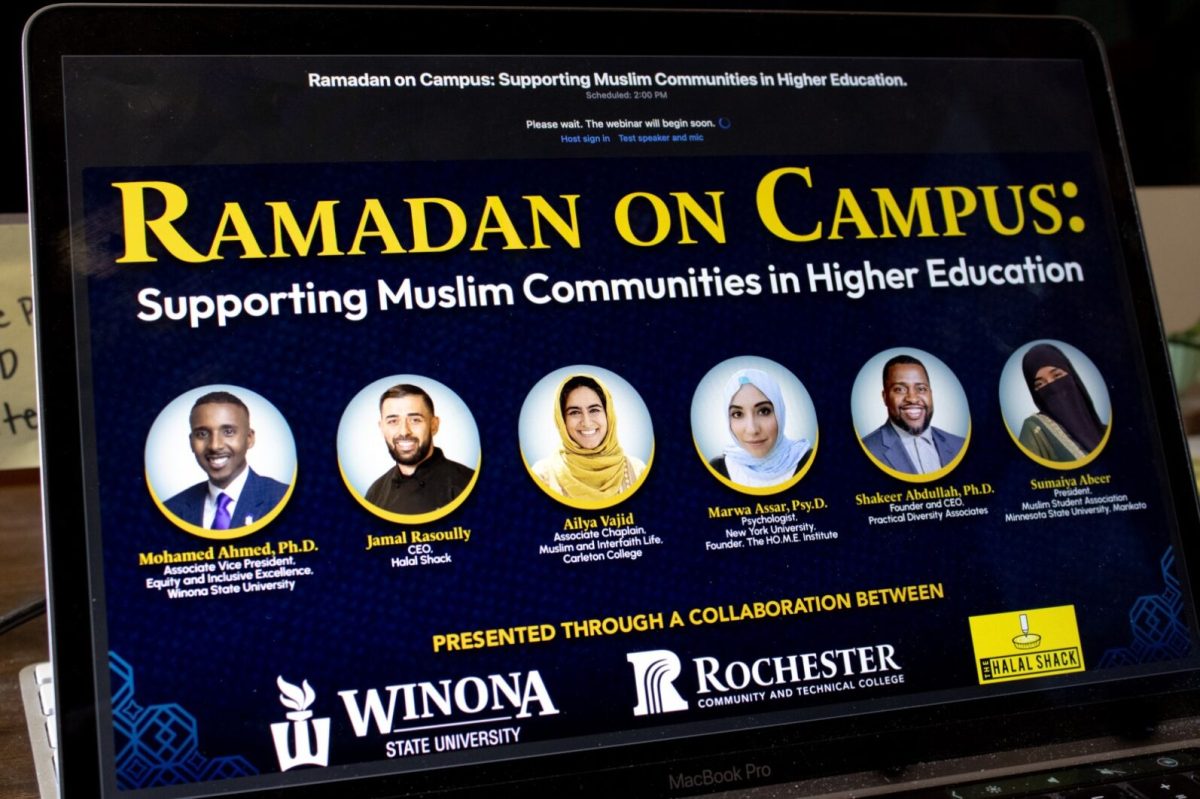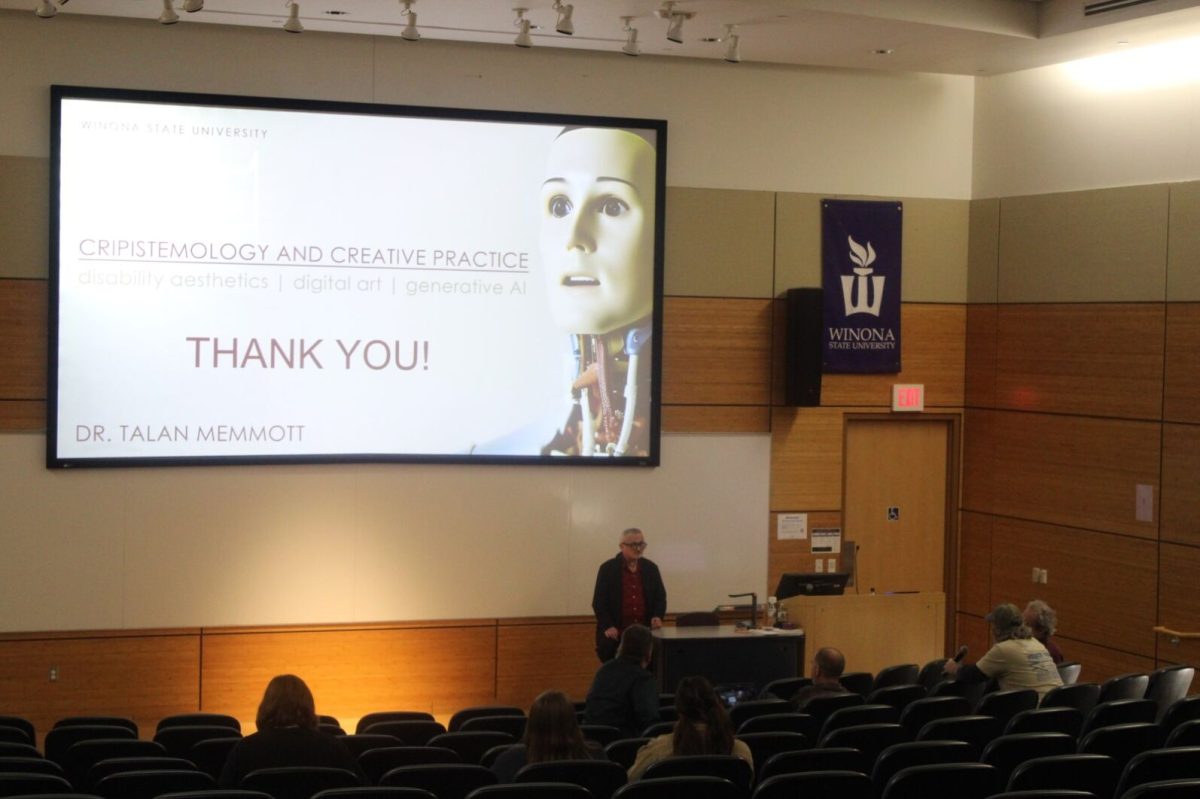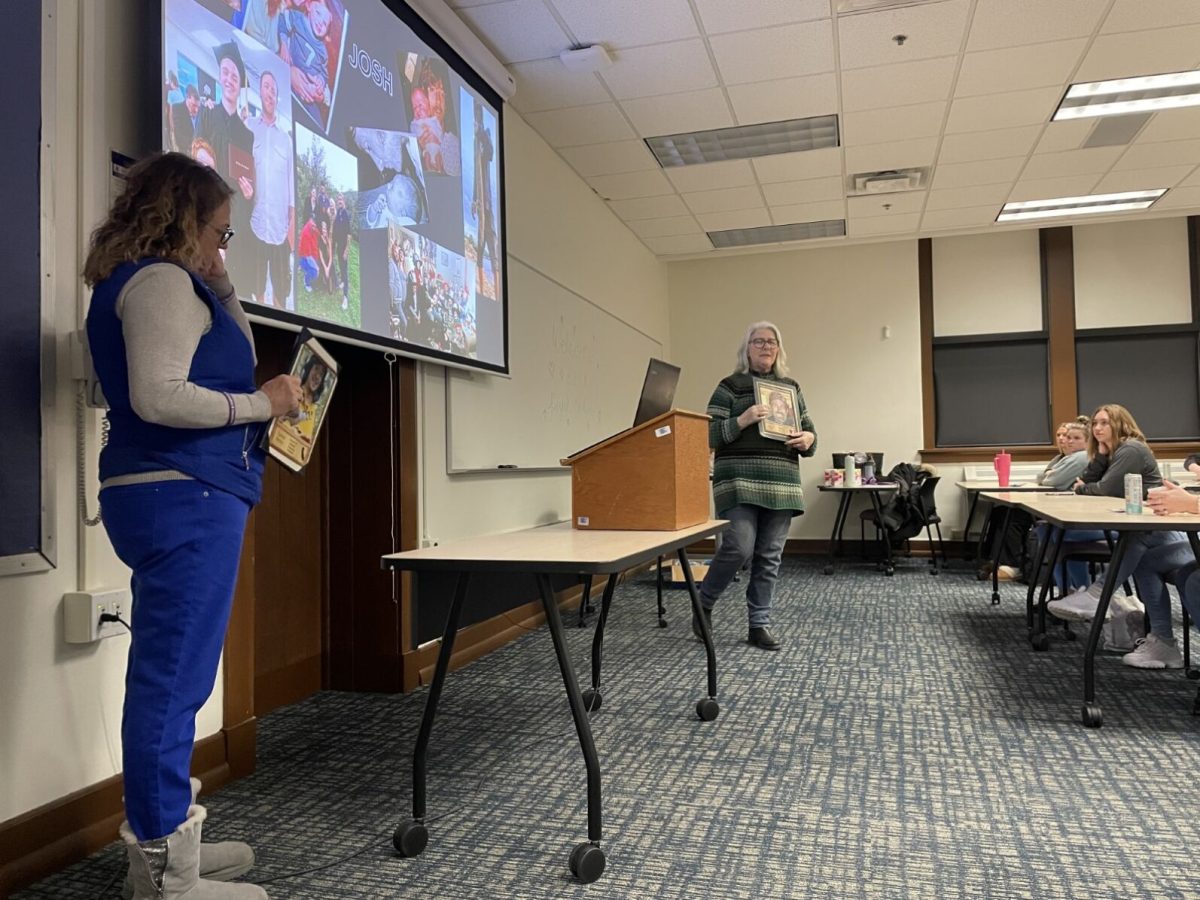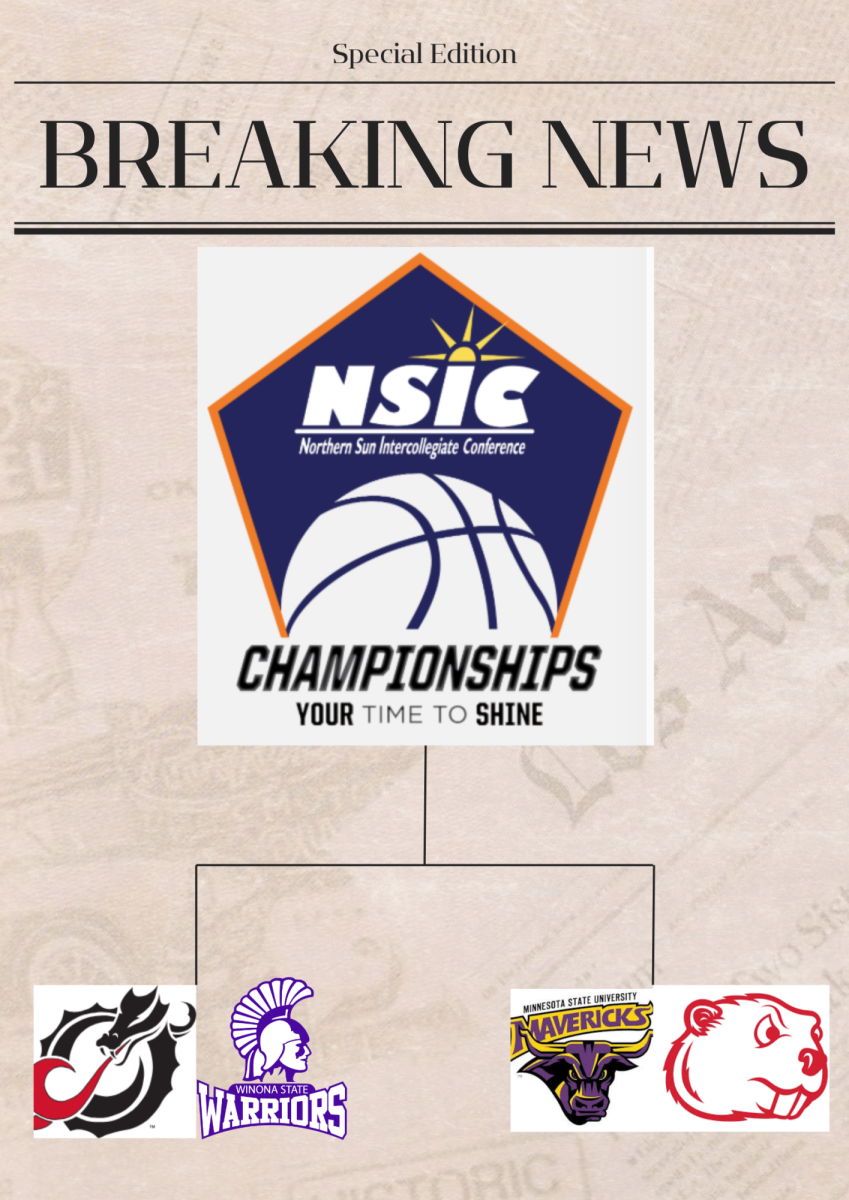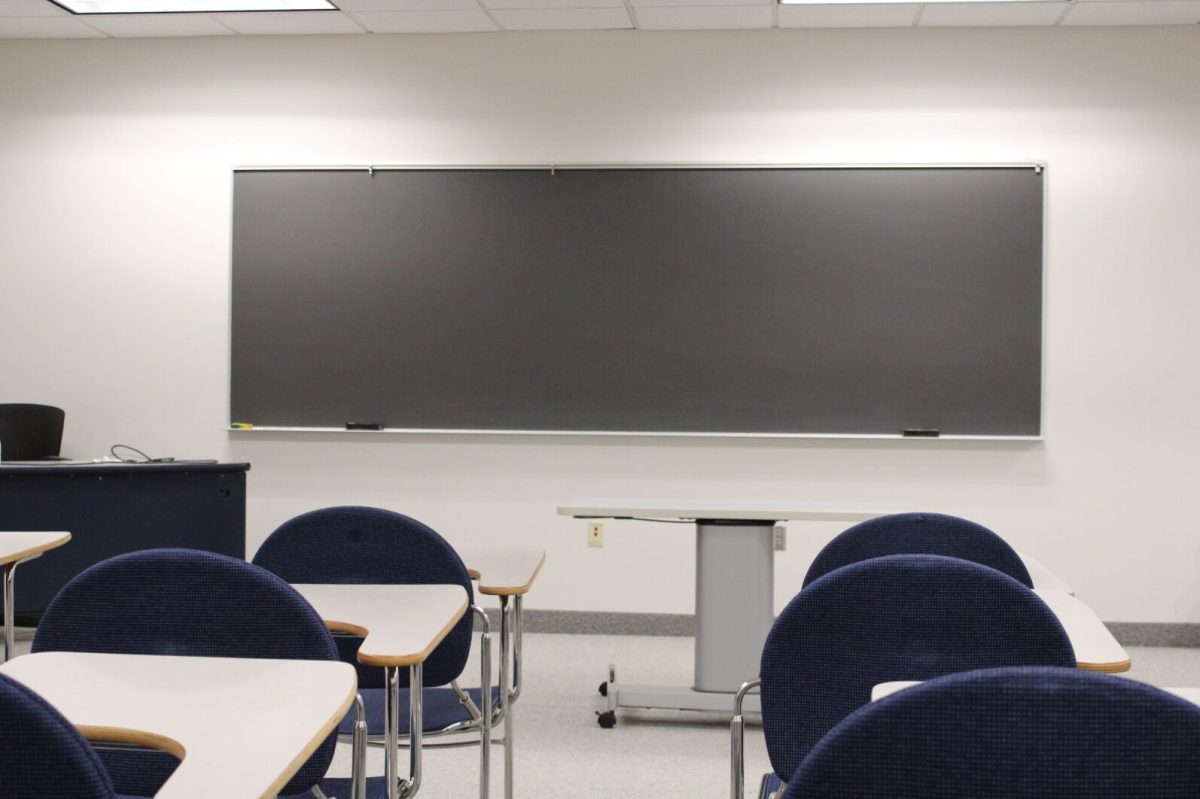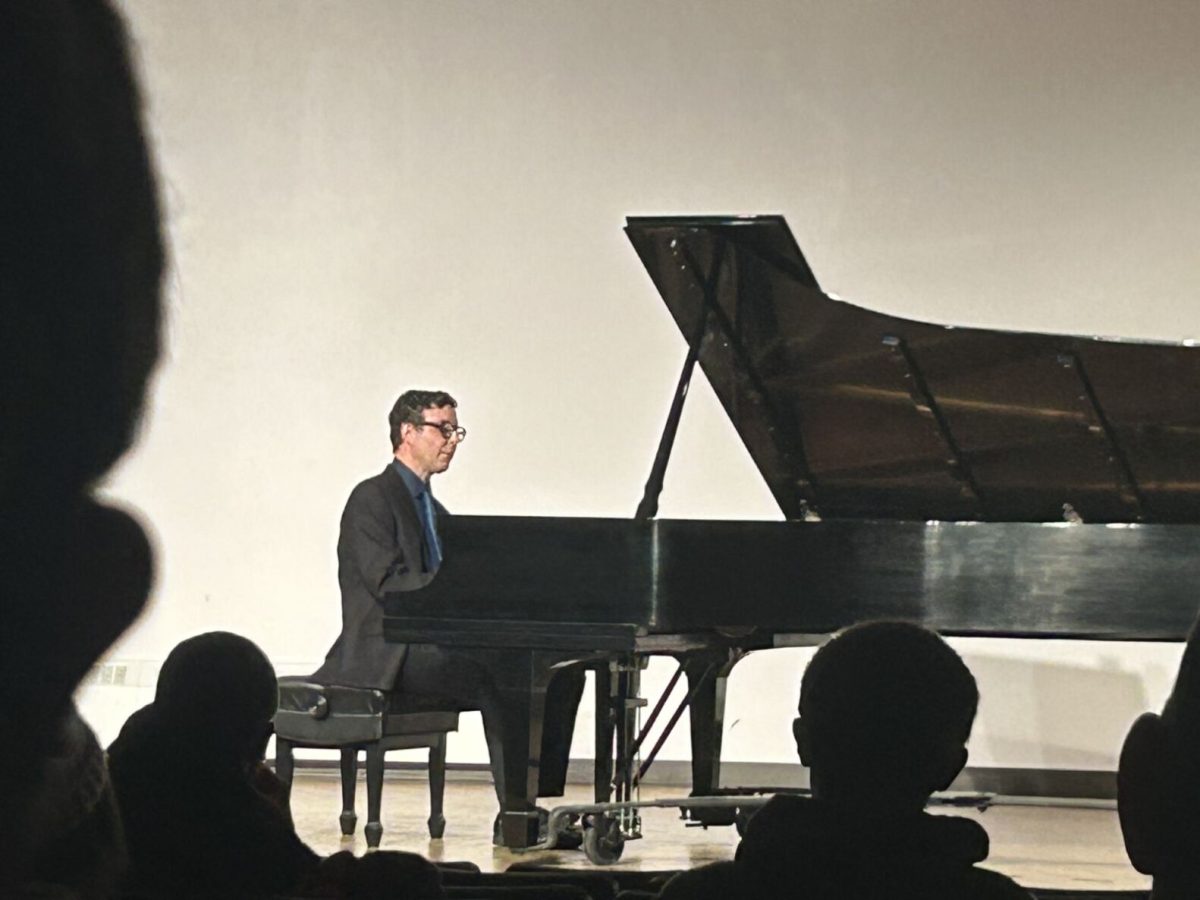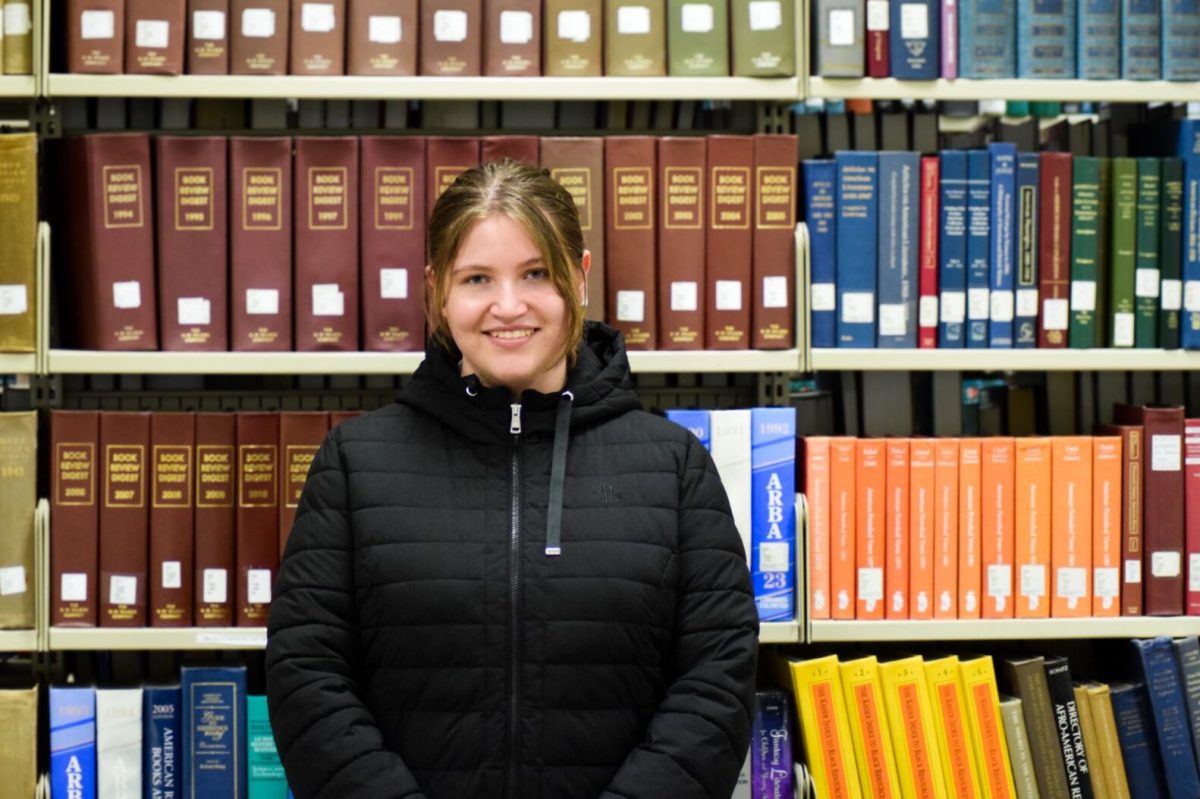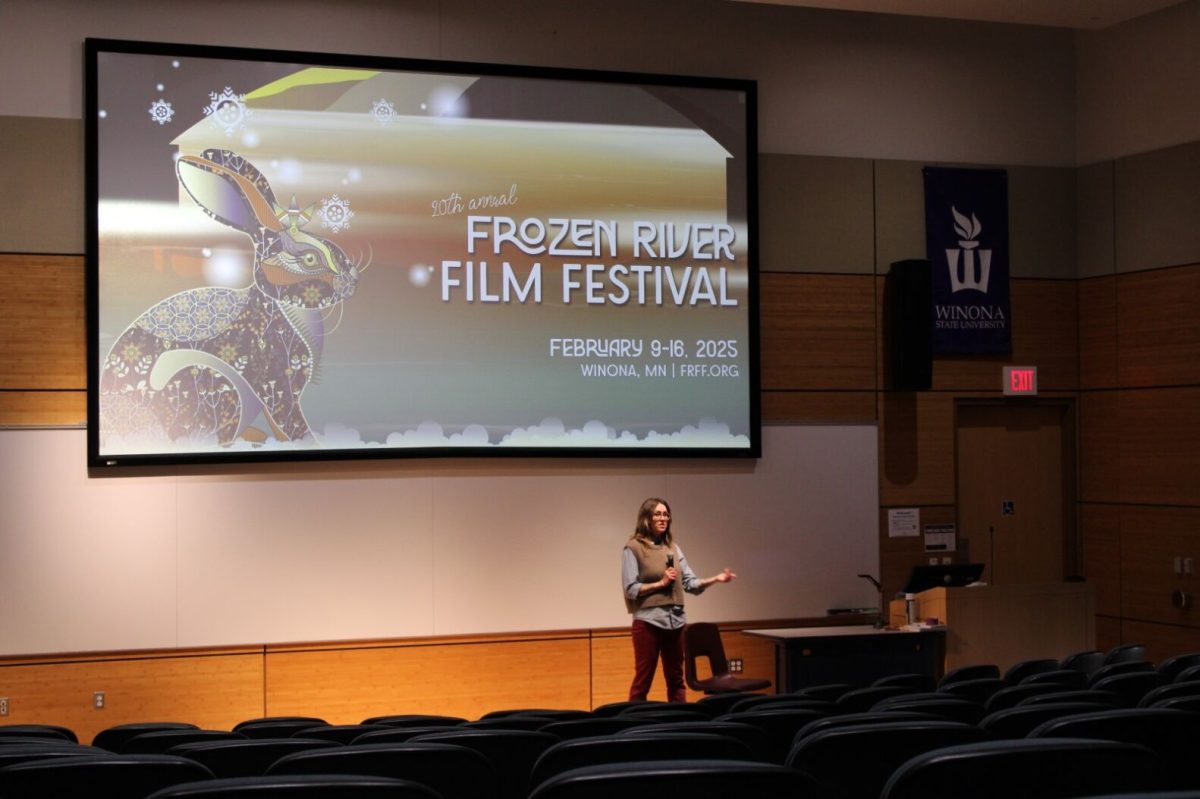Sami Schwanke/Winonan
Barry Estabrook, author of Winona State University’s 2013 Common Book, “Tomatoland,” threw a tomato into his audience Monday night in the Harriet Johnson Auditorium.
“Our generation has really messed up food production for your generation,” Estabrook said, “and my generation will be OK, but yours might not be.”
This year, Estabrook’s book on modern agriculture has been in the hands of students across Winona State’s campus.
Common book director and English professor Ann-Marie Dunbar discussed the selection process for the Common Book and how the community is involved.
“We solicit nominations from the entire WSU community each year. We also get nominations from community members,” Dunbar said. “A committee comprised mostly of faculty in the English department generates a shortlist of nominated books, which is then made public to WSU faculty, staff and students.”
From this list, the committee decides which book will be feasible, which authors will be available for an appearance in both the fall and the spring semesters, and then the committee takes a vote to decide. The committee takes students’ ideas into consideration.
“We have had nominations from students every year I’ve directed the program,” Dunbar said, “Student nominations and input are always welcome and helpful.”
“Tomatoland” was chosen for its variety of topics and correlation with Winona State’s theme of Civic Action.
“It addresses important issues of food, labor, business and social justice that we thought would be of interest to many in the WSU community,” Dunbar said.
Several professors, including Dunbar, are using “Tomatoland” in their courses. At least 900 students are reading it this fall, according to Dunbar. Dunbar said she has received positive feedback from her students.
“As with any selection, there will be students who really enjoy it and students who don’t enjoy it so much,” Dunbar said, “But ‘Tomatoland’ seems to have interested and engaged many of the students who have read it this year. In my own classes, I’ve had students write very thoughtful, perceptive responses and papers on the book. The book has also led to some very strong research papers and projects.”
The students attending Estabrook’s presentation may have thought a little differently.
Freshman Melissa Bliese attended the presentation for her English 111 class.
“I thought it [the presentation] was really good and went along with the book,” Bliese said. “I thought it [the book] was OK. It was a little too technical. All the chemical descriptions were long.”
Senior Steve Higgins attended the presentation to gain perspective on tomato farms. Higgins had not read Estabrook’s book.
“Estabrook has some really good points, and I think it’s an important message,” Higgins said. “He’s kind of a weak presenter though, which hurt his message.”
Estabrook’s message encompassed a swath of issues from nutrition to labor ethics.
According to Estabrook, modern tomatoes have one third less vitamin C, 60 percent less calcium, and 14 times more sodium than tomatoes had in the 1960s.
Estabrook focused on the Florida tomato production. The problem with fresh tomatoes, he said, is that they need to be picked by hand five to six times a year.
Estabrook also said almost half of all tomatoes are produced in Florida and each corporation earns about $6 million.
Meanwhile, tomato field workers were making 50 cents per 35 pound bucket of tomatoes they picked. These workers were not a part of the Fair Labor Standards Act.
Workers were provided with poor living conditions, forced to stay at their jobs, beaten and given no time off.
This reality, Estabrook said, is changeable.
“If we get together, we can really do stuff,” he said.
While they didn’t necessarily sing Estabrook’s praises, the students, at least, did not throw his tomato back.
Contact Sami at SSchwanke10@winona.edu

